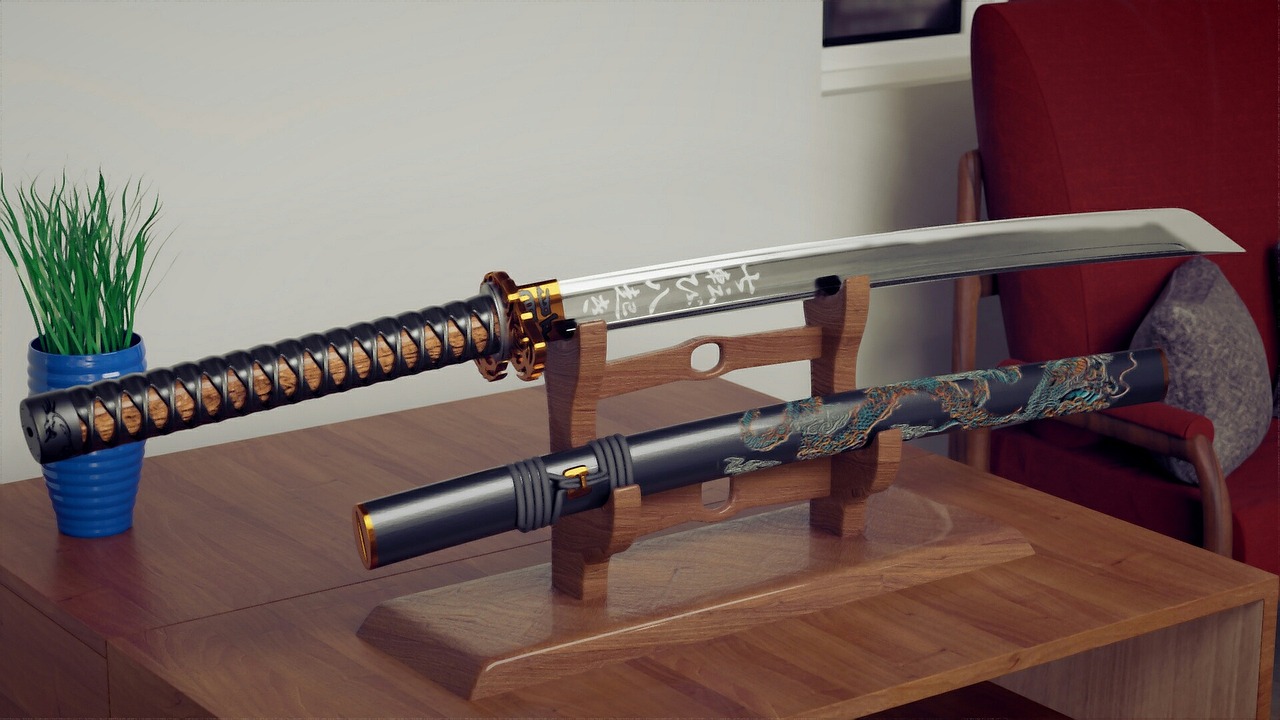
For centuries, the katana has been regarded as the weapon of choice for samurai warriors in feudal Japan. Although it has been utilized mostly for ceremonial purposes nowadays, it continues to captivate the interest of people who admire its beauty, design, and functionality.
One of the things that set the katana sword in the US apart from other swords is its unique design, which comprises several parts that contribute to its effectiveness as a cutting tool and a symbol of power. If you’re someone who’s interested in owning an authentic samurai sword or just someone curious about the different parts of a katana, then this blog post is for you.
Blade
The distinguishing feature of a katana sword is its blade, which measures between 60-80 centimeters long. Its slim and curved shape allows it to have a more extended cutting surface that enables the wielder to deliver more powerful and effective strikes. It is made of high-carbon steel, which is precisely folded multiple times to give it its unique pattern. The edge is angled in a way that allows it to slice through most materials with ease while retaining its sharpness over time.
Hilt
The hilt, also known as the Tsuka, is the handle of the sword that provides a secure grip for the wielder. It’s usually wrapped in leather or silk, which allows it to absorb sweat. The hilt’s length is proportional to the size of the sword, which makes it easier to use for slashing and stabbing movements. It also has a round or elliptical guard called the Tsuba, which serves to protect the hand and aids in deflecting blows.
Pommel
The Pommel, also known as the Kashira, is the cap at the end of the hilt. Its primary role is to balance the weight of the sword and provide a counterbalance to the blade. It also acts as a stopper for the hands, preventing them from slipping off the handle during use. It’s often decorated with symbols of the samurai clan or family that commissioned the sword.
Scabbard
The Scabbard, also known as the Saya, is used to protect the blade from rust and damage when not in use. It’s typically made of wood and covered with lacquer or leather, which protects it from water and moisture. The scabbard also plays a role in the aesthetics of the sword since it’s usually decorated with intricate designs that reflect Japanese culture and history. The end of the scabbard, known as the Kojiri, is often capped with metal or carved wood in a decorative motif.
The Tang
The tang is the unsharpened metal extension of the blade, which is inserted into the handle. It provides balance and stability to the sword, making it easier to wield and control. The tang is also known as “nakago,” and it is wrapped with ray skin and “ito” (silk or cotton) to create a firm grip. The nakago’s end protrudes from the handle, usually drilled with a small hole that houses a “mekugi” (bamboo peg), which secures the blade to the handle.
The Hamon
The hamon is the distinct line that separates the blade’s hard and soft layers, visible on the sword’s surface. It is created through heat treatment, where the blade’s edge is heated and then quenched in water, oil, or clay, giving it a wave-like pattern. The hamon adds to the blade’s beauty and enhances its sharpness and durability.
The Tsuba
The tsuba is the sword’s guard, situated on the tang’s underside, separating the blade from the handle. It is a circular or oval-shaped metal plate, decorated with intricate designs, symbols, or characters. The tsuba’s primary function is to protect the hand and fingers from sliding onto the blade during battles, as well as to balance the sword’s weight distribution.
The Handle
The handle, also referred to as “tsuka,” is the sword’s grip, which provides comfort, stability, and control during use. Traditionally, the tsuka is made of wood and covered with ray skin, fastened with ito threads to create a firm grip. The handle is embellished with metal fittings, such as menuki (ornaments), fuchi (collars), and kashira (pommel). The tsuka’s length varies according to the sword’s size and is fitted to the tang with mekugi pegs.
Conclusion
In summary, a katana sword is much more than just a blade. It’s a symbol of the rich history and culture of the samurai warriors who wielded them during Japan’s feudal era. Each part of the sword serves a unique purpose, which contributes to the sword’s overall effectiveness as a cutting tool and work of art.
If you’re considering buying an authentic katana sword, then look for a real katana sale. Understanding the different parts and their significance will allow you to appreciate the craftsmanship and history that has gone into creating this magnificent weapon.
Interesting Related Article: “Katana Sword: The Embodiment of Japan’s Timeless Craftsmanship“
